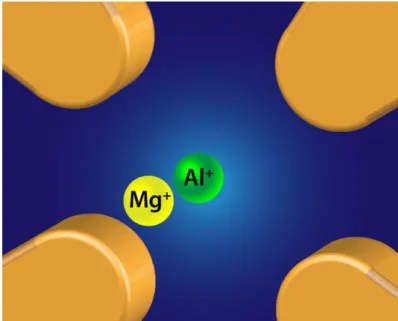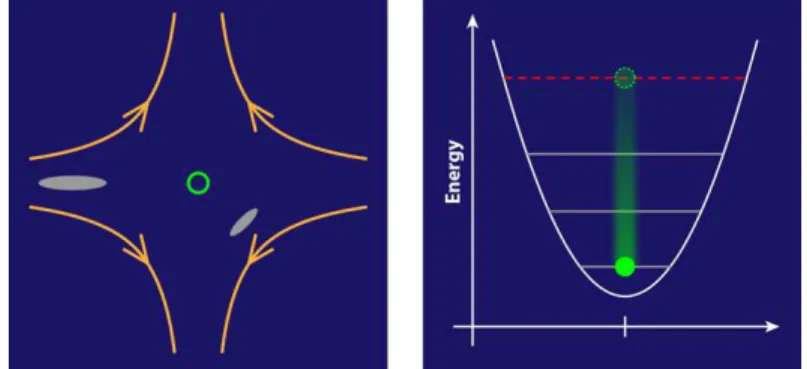Publisher’s version / Version de l'éditeur:
Vous avez des questions? Nous pouvons vous aider. Pour communiquer directement avec un auteur, consultez la première page de la revue dans laquelle son article a été publié afin de trouver ses coordonnées. Si vous n’arrivez pas à les repérer, communiquez avec nous à PublicationsArchive-ArchivesPublications@nrc-cnrc.gc.ca.
Questions? Contact the NRC Publications Archive team at
PublicationsArchive-ArchivesPublications@nrc-cnrc.gc.ca. If you wish to email the authors directly, please see the first page of the publication for their contact information.
https://publications-cnrc.canada.ca/fra/droits
L’accès à ce site Web et l’utilisation de son contenu sont assujettis aux conditions présentées dans le site LISEZ CES CONDITIONS ATTENTIVEMENT AVANT D’UTILISER CE SITE WEB.
Physics, 12, 2019-07-15
READ THESE TERMS AND CONDITIONS CAREFULLY BEFORE USING THIS WEBSITE.
https://nrc-publications.canada.ca/eng/copyright
NRC Publications Archive Record / Notice des Archives des publications du CNRC :
https://nrc-publications.canada.ca/eng/view/object/?id=cc9f04d5-53b0-4eed-8605-72450f597ca5
https://publications-cnrc.canada.ca/fra/voir/objet/?id=cc9f04d5-53b0-4eed-8605-72450f597ca5
NRC Publications Archive
Archives des publications du CNRC
This publication could be one of several versions: author’s original, accepted manuscript or the publisher’s version. / La version de cette publication peut être l’une des suivantes : la version prépublication de l’auteur, la version acceptée du manuscrit ou la version de l’éditeur.
For the publisher’s version, please access the DOI link below./ Pour consulter la version de l’éditeur, utilisez le lien DOI ci-dessous.
https://doi.org/10.1103/Physics.12.79
Access and use of this website and the material on it are subject to the Terms and Conditions set forth at
Ion clock busts into new precision regime
VIEWPOINT
Ion Clock Busts into New Precision
Regime
An aluminum ion clock has a fractional-frequency uncertainty of less than one part in 10
18, a
four-decades-long goal in precision.
by
Pierre Dubé
∗W
hich periodic oscillator would make the best clock? Nobody really knows. But in 1982 Hans Dehmelt—who would later win the No-bel prize for his development of the ion trap—realized that the “ultimate” time keeper might be a single ion, trapped by electric fields and cooled with lasers [1]. The frequency of light emitted by the ion as it transi-tions between two internal states could, Dehmelt estimated, be measured with a fractional uncertainty of 10−18, allowing a similarly precise definition of the second as a fixed
num-Figure 1: The Al+
ion clock developed by the NIST group is the most precise clock available today. The Al+ion has many advantages over other ions. But in order to cool and detect it, the ion has to be coupled to a ‘‘partner ion,’’ which in the new clock is Mg+
. (S. M. Brewer et al. [2]; adapted by APS/Alan Stonebraker)
∗National Research Council of Canada, Ottawa, Ontario
ber of cycles of the light wave. Nearly four decades later, researchers have fulfilled Dehmelt’s visionary prediction. Samuel Brewer and colleagues from the National Institute of Standards and Technology (NIST) in Colorado report an Al+
ion clock with a fractional uncertainty of 0.94×10−18,
the most precise clock in existence today [2]. Using differ-ent ions or neutral atoms in so-called optical lattices, other groups are expected to soon reach the 10−18
milestone [3–7], which would allow for increasingly precise tests of varia-tions in fundamental constants.
Ions, like other atomic systems, have the great advan-tage that their natural transition frequencies are determined solely by physical constants and quantum mechanics. Pro-vided that the ions are in a controlled environment, this frequency can be reproduced anywhere on Earth or even in space. Dehmelt’s bold prediction stemmed from his re-alization that an ion’s environment could, in principle, be controlled to near perfection. The combination of laser cool-ing and ion trappcool-ing would allow the ion to be held in a near motionless state, avoiding even the tiniest relativistic shifts to the ion frequency.
In his 1982 paper, Dehmelt identified27Al+specifically as an excellent candidate for a high-precision clock [1]. This ion has a transition of around 1.21×1015 Hz with an extremely
small natural linewidth of 8 mHz [8]. And compared with other optical clock systems, the Al+
transition is much less sensitive to blackbody radiation or to external magnetic-and electric-field gradients [6]. But the ion has two serious drawbacks. Its most accessible atomic transition for laser cooling is in the vacuum ultraviolet and therefore imprac-tical for today’s laser technology. For similar reasons, the quantum state of the ion is difficult to detect using a conven-tional light-scattering measurement. In 2005, the NIST group showed they could circumvent these problems by trapping the Al+next to another ion (Fig. 1) that can be more easily laser cooled and detected [9]. As the partner ion is cooled, it pulls heat from the Al+ ion through the Coulomb inter-action. The same interaction can be harnessed to “imprint” the Al+
electronic state on the motional states of its partner, which can be measured to characterize the Al+
ion. Ap-plying this partnering technique, known as quantum logic
Figure 2: The NIST group upped the precision of their ion clock by reducing two sources of ion motion. So-called micromotion (left) occurs when the ion is displaced to off-center regions (ellipses) in the trap, where the ion experiences a finite rf electric field (orange lines). Secular motion comes from the thermal motion of the ion in the trap, and it can be reduced by laser cooling the ion to its motional ground state (right). (APS/Alan Stonebraker)
spectroscopy, the NIST researchers were able, in 2007, to measure the Al+clock transition with 5×10−15uncertainty
[8].
With the cooling technique in place, the NIST group has spent the last decade contending with the main perturbation to the Al+
clock frequency: residual motion of the ion in the trap. This motion comes primarily from two sources—the trap and thermal effects (Fig. 2)—both of which affect Al+
more than they do other clock ions because of its small mass. The first source, known as micromotion, arises from the trap itself, which is made of multiple electrodes whose voltages oscillate at radio frequencies (rf) and produce a “quadrupole” electric-field configuration (Fig. 2, left). Ide-ally, the ion sits where this rf field is zero. But imperfections in the trap can displace the ion into a region of finite rf field, which perturbs the ion’s energy levels (through the ac Stark effect). The field also accelerates the ion, resulting in time di-lation of the clock frequency. In their new work, Brewer et al. reduced the uncertainty resulting from these two effects by operating the trap at a lower rf and voltage and by making real-time corrections to the remaining micromotion.
The second source, called secular motion (Fig. 2, right), comes from the thermal motion of the trapped ion and its partner (25Mg+
in the new experiments.) The ion pair has 6 motional degrees of freedom, each of which contributes to a time-dilation shift. Electric field noise and other sources heat the ions, but a new trap design helped the researchers to minimize the heating rate while they were measuring the ion frequency. Building on earlier work [10], they also used a laser-cooling scheme that brought the ion pair to near its 3D motional ground state.
Addressing the motional perturbations was a big part of crossing the long-sought 10−18
uncertainty threshold. But another crucial step was reducing the uncertainty that
ex-ists because an external magnetic field is needed to define the quantization axis of the quantum logic clock. This field shifts the clock transition by an amount that varies as the square of the field strength multiplied by a “sensitiv-ity” coefficient, imposing a fractional shift of approximately 10−15
. Brewer and colleagues halved the uncertainty from this “quadratic Zeeman shift” by accurately measuring the field strength (in situ, via the Al+
ion) and by developing an improved method of measuring the sensitivity coefficient [11]. With the lowering of the uncertainties from micromo-tion (5.9×10−19), secular motion (2.9×10−19), the quadratic
Zeeman shift (3.7×10−19), and other sources, the team
re-ports a combined uncertainty of 9.4×10−19.
Researchers have made impressive progress with optical clocks in the last 20 years, reducing the uncertainties by 4 orders of magnitude. This success came from countless improvements in experimental methods, including break-throughs in laser stabilization, laser manipulation of atomic states, laser cooling, and, in particular, frequency measure-ment. On its own, an ion emitting at a precise frequency isn’t enough to make a clock—the oscillations of light have to be counted, a step that was enabled by the development of femtosecond frequency combs.
Already, today’s best optical clocks are sufficiently precise to benefit their intended applications—such as redefining the SI second, mapping Earth’s gravitational potential, test-ing fundamental physics, and navigation. Still, it’s only natural that 10−19
will become the new goal, both for the intrinsic challenge and to continue the long tradition of pre-cision measurements that have led to discoveries about the Universe.
This research is published in Physical Review Letters and
Physical Review A.
REFERENCES
[1] H. G. Dehmelt, ‘‘Mono-ion oscillator as potential ultimate laser frequency standard,’’ IEEE Trans. Instrum. Meas. IM-31, 83 (1982).
[2] S. M. Brewer, J.-S. Chen, A. M. Hankin, E. R. Clements, C. W. Chou, D. J. Wineland, D. B. Hume, and D. R. Leibrandt, ‘‘27Al+
quantum-logic clock with a systematic uncertainty be-low 10−18
,’’ Phys. Rev. Lett. 123, 033201 (2019).
[3] N. Huntemann, C. Sanner, B. Lipphardt, C. Tamm, and E. Peik, ‘‘Single-ion atomic clock with 3×10−18 systematic
un-certainty,’’ Phys. Rev. Lett. 116, 063001 (2016).
[4] W. F. McGrew et al., ‘‘Atomic clock performance enabling geodesy below the centimetre level,’’ Nature 564, 87 (2018). [5] T. Bothwell, D. Kedar, E. Oelker, J. M. Robinson, S. L. Bromley,
W. L. Tew, J. Ye, and C. J. Kennedy, ‘‘JILA SrI optical lattice clock with uncertainty of 2.0×10−18,’’ arXiv:1906.06004.
[6] A. D. Ludlow, M. M. Boyd, J. Ye, E. Peik, and P. O. Schmidt, ‘‘Optical atomic clocks,’’ Rev. Mod. Phys. 87, 637 (2015). [7] M. Abdel-Hafizet al., ‘‘Guidelines for developing optical clocks
with 10−18fractional frequency uncertainty,’’ arXiv:1906.11495.
[8] T. Rosenbandet al., ‘‘Observation of the1S
0→3P0clock
tran-sition in27Al+
,’’ Phys. Rev. Lett. 98, 220801 (2007).
[9] P. O. Schmidt, T. Rosenband, C. Langer, W. M. Itano, J. C. Bergquist, and D. J. Wineland, ‘‘Spectroscopy using quantum logic,’’ Science 309, 749 (2005).
[10] J.-S. Chen, S. M. Brewer, C. W. Chou, D. J. Wineland, D. R. Leibrandt, and D. B. Hume, ‘‘Sympathetic ground state cooling
and time-dilation shifts in an27Al+ optical clock,’’ Phys. Rev. Lett. 118, 053002 (2017).
[11] S. M. Breweret al., ‘‘Measurements of 27Al+
and25Mg+
mag-netic constants for improved ion-clock accuracy,’’ Phys. Rev. A 100, 013409 (2019).
10.1103/Physics.12.79

